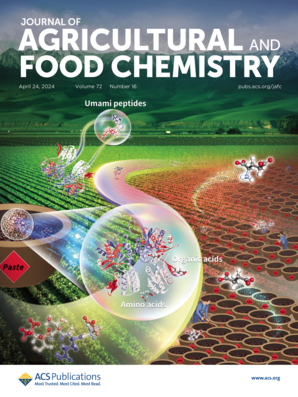Megalurothrips usitatus Feeding-Induced De Novo Synthesis of the C8 Volatiles 1-Octen-3-ol and 2-Ethyl-1-hexanol in Cowpea Plants Regulates Plant–Herbivore–Predator Interactions
IF 5.7
1区 农林科学
Q1 AGRICULTURE, MULTIDISCIPLINARY
引用次数: 0
Abstract
Analyzing the role of herbivore-induced volatiles in plant–herbivore–natural enemy interactions is crucial for developing integrated pest management strategies. This study identified 1-octen-3-ol and 2-ethyl-1-hexanol as the primary C8 volatiles induced by Megalurothrips usitatus infestation in cowpea flowers. The concurrent accumulation of glycosides of these volatiles, along with the upregulation of LOX and HPL expression, suggested that the increased emissions of 1-octen-3-ol and 2-ethyl-1-hexanol result from enhanced de novo biosynthesis regulated by herbivore-induced jasmonate. 1-Octen-3-ol exhibited strong repellent effects against M. usitatus and attracted its natural enemy, Orius similis, at low concentrations. By contrast, 2-ethyl-1-hexanol repelled M. usitatus but did not exert a significant attractant effect on O. similis. These volatiles prime the defense mechanism in cowpea plants against M. usitatus, which highlight their promising role in controlling thirp populations and enhancing cowpea cultivation.

求助全文
约1分钟内获得全文
求助全文
来源期刊
CiteScore
9.90
自引率
8.20%
发文量
1375
审稿时长
2.3 months
期刊介绍:
The Journal of Agricultural and Food Chemistry publishes high-quality, cutting edge original research representing complete studies and research advances dealing with the chemistry and biochemistry of agriculture and food. The Journal also encourages papers with chemistry and/or biochemistry as a major component combined with biological/sensory/nutritional/toxicological evaluation related to agriculture and/or food.

 求助内容:
求助内容: 应助结果提醒方式:
应助结果提醒方式:


